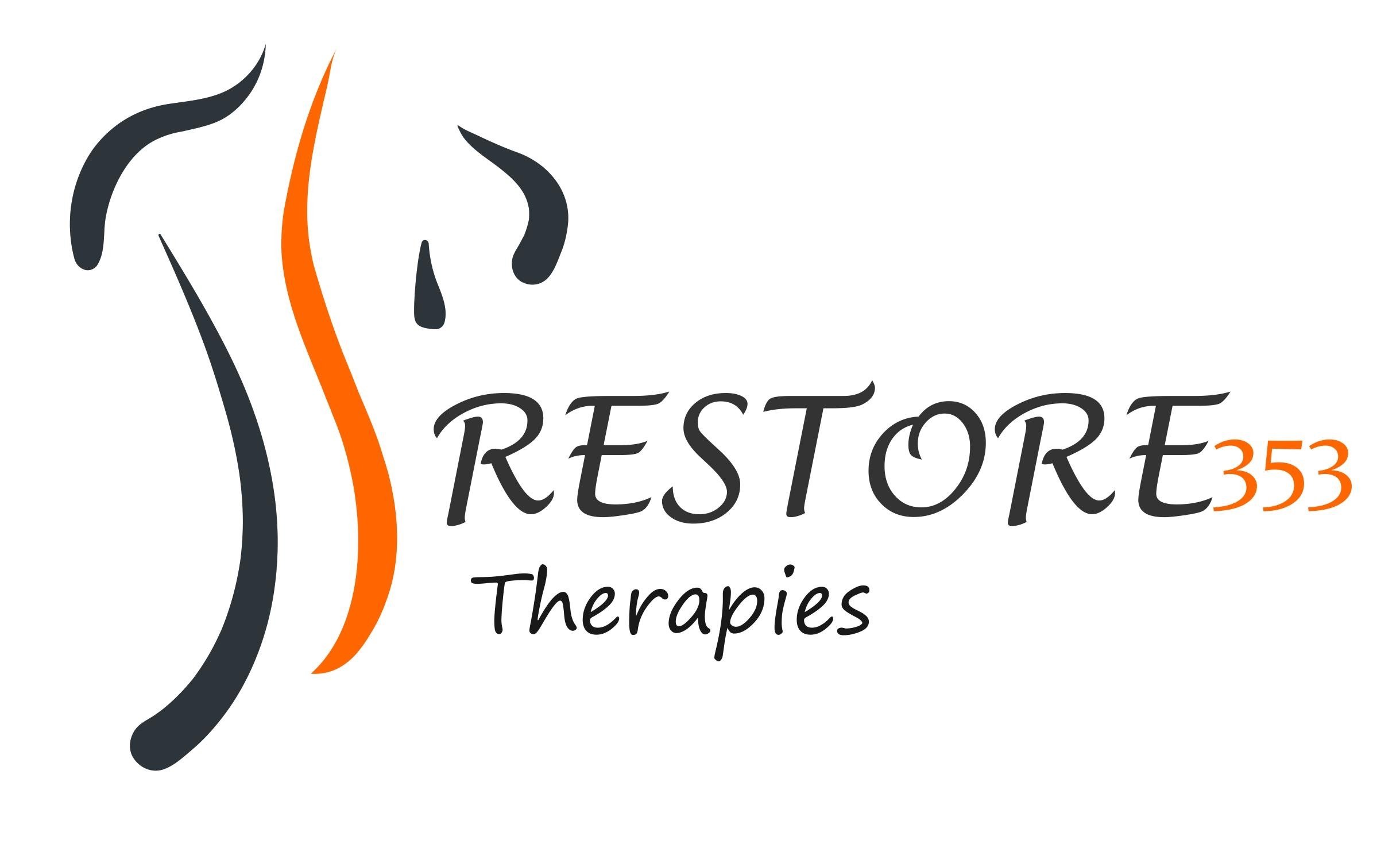Five Easy Exercises for the Pilates Beginner
Embarking on a new exercise program, including Pilates can be daunting for everyone. Learning good form, proper terminology, and how to progress safely is a challenge. Here are 5 basic Pilate’s exercises to get you started!
PHOTO CREDIT: Restore353
1. Pelvic Tilts
Begin by lying on your back, knees bent with feet sit bones distance apart (roughly 3-4 inches). Allow the spine to settle into the floor and let the pelvis relax into a neutral position. A neutral pelvis is when both hip points and your pubic bone are in a parallel plane. Inhale to prepare, as you exhale draw your navel towards your spine, rocking the pelvis backward. This is called the posterior tilt, where the low back comes into contact with the floor. As you inhale, rock the pelvis in the opposite direction (anterior tilt) allowing the pubic bone to go through the legs and the arch of the low back to increase slightly. The goal is to rock the pelvis back and forth, without forcing in either direction. Performing pelvic tilts helps to bring awareness to the deep abdominal muscles and how to activate them by drawing the navel back towards the spine versus working without muscle recruitment. Activating the deep abdominal muscles will both stabilize the pelvis and release pressure from the spine, and can alleviate back pain.
VIDEO CREDIT: Restore353
2. Articulating Bridge
Begin laying on the floor with knees bent, feet on the floor, sit bones distance apart. Inhale as a preparation. On the next exhale, articulate through the vertebrae one at a time, to lift the hips level off the floor, stepping into the feet. Energy extends out over the knees as the front ribs are encouraged to relax, allow the spine to settle into a long line, with a long tail bone. The pelvis slightly tilts posteriorly releasing the low back. The hamstrings are activated by pressing into the feet, feeling the heels pull towards the sits bones. This activates and releases back muscles, encourages mobility through the spine and pelvis, while strengthening the hamstrings and inner thighs. Focus on lifting the hips off the floor, nice and easy while rolling through the spine. Inhale to pause at the top. Return back down to the floor, one vertebrae at a time as you exhale. The goal is not to lift the hips as high as possible, but to feel length through the spine as the hips lift. The hips will lift higher as the muscles lengthen over time. Bridges help to release the postural muscles in the spine, activate the deep abdominals and hamstrings.
VIDEO CREDIT: Restore353
3. Alternating Knee Folds
The focus is on maintaining a neutral pelvis and spine, with nice open relaxed shoulders, while isolating movement in the hips. Begin laying on the floor with knees bent, feet on the floor, sit bones distance apart. Inhale as a preparation. On the next exhale, lift the right leg into a table top position without shifting the hips from side to side, or opening the leg on the ground. Inhale to hold the leg in table top, exhale to return the foot to the floor. Alternate legs focusing on keeping the navel engaged towards the spine: to stabilize the pelvis, encourage deep abdominal engagement, and create healthy femoral head movement through the hip.
PHOTO CREDIT: Restore353
4. Prone Leg Lift
The focus is on maintaining a stable core, while lifting the legs off the floor. Inhale to prepare. As you exhale, first draw the navel up away from the floor, then lift one straight leg off the floor, just a few inches. Keep the hips from rocking from side to side, or from arching the low back. Inhale to return the leg to the floor. Alternate with the other leg. The knees stay straight and energy of the legs is long away from the body to encourage the lift through hip extension. The navel stays engaged towards the spine, lifted off of the floor, to protect the lower back and stabilize the pelvis. Try this by lifting both legs off the floor together. Utilize the same breath pattern. Feel the inner thighs connected for more support as you lift and lower. Keep the same considerations in mind to protect the low back and stabilize the pelvis.
PHOTO CREDIT: Restore353
5. Quadruped Alternating Arms and Legs
Begin on the hands and knees. Shoulder should be directly over the wrists and hips directly over the knees. Head should be long and in line with the spine. Avoid dropping the head. Feel like you are pressing the floor away from you to engage and stay lifted. Inhale to prepare. As you exhale, draw the navel towards your spine send the right arm straight overhead, parallel with the floor, palm facing in. Inhale to return the hand to the floor. Repeat to the other side. Focus on keeping the shoulders from hiking towards the ear, and the rib cage and hips from rotating. Repeat the same exercise extending one leg at a time. Keep strong through the upper body; avoid rotating the hips to lift the leg higher. Keep both hip points even and parallel to the floor. Once you have mastered the arms and legs separately, try alternating opposite arm and leg!






